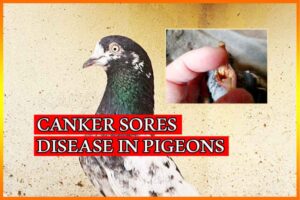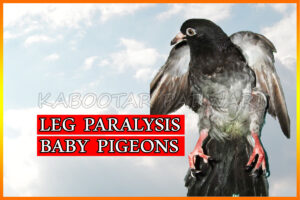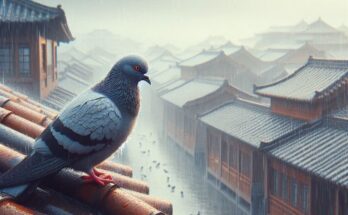Pigeon Life Cycle – Pigeons have had a long and colorful history in the service of humans. Our interests and efforts at breeding selection gave us pigeons with different colors, shapes, sizes and abilities, which lead to the development of the homing and racing pigeons.
Pigeons readily adapt themselves to living under variety of conditions. They are easy to tame. Pigeons are polite birds they don’t produce any loud noises. Usually pigeons don’t require big space they can adjust in small place too. In past pigeons were used to carry messages in war times also. They worked in different rescue missions. Nowadays pigeons are breed for racing, high flying, Exhibition shows.
Pigeon Fancier – Beginner Guide
To start this hobby, beginners should consider the necessary setup:
- Housing
- Feed and Water Supply
- Shipping Crates
- Nesting Boxes
- Knowledge of Pigeon Diseases
Always start with two pair of pigeons of the same breed and variety of colors. Pigeons mate in pairs and generally remains paired to each other for life. In case of separation or death of the partner, the bird will mate again with new partner. Band your birds and keep their record. Select your best birds for breeding purpose. Once you are at this stage you will think to move forward considering to increase the size of your breeding flock.
What Do Pigeons Eat – Pigeon Feed
The most asked question by beginners is what pigeons eat? Mixture of whole grains, some grit and fresh clean water is the feed to keep your pigeon healthy and active. The feed, grid and water should be given in feeders and drinkers to avoid dirt or filth contaminating the feed. Peas together with whole wheat, flint corn and various grain sorghums are common diet for pigeons. There are many international brands providing mixture of pigeon grains free from dust and broken kernels.
Add some pellets in pigeons feed, but remember to mix it with whole grains as 1:1 ratio. Pellets promotes digestion and also enhances the growth of squabs. Some breeders prefer to feed pellets in the morning and whole grains in the evening. Use of more pellets in pigeon’s diet increases water intake in pigeons.
Keep feeders for pigeons protected from rainy or moist weather. Better to place the feeders inside the coop rather than out open to sky. Always remove the feed if accidently moistened by rain or other incident as it can cause fungal diseases in pigeons. Moreover, protect the feed from mice and rats.
Why Is Grit Important – Pigeon Grit
Grit is the choice of champions and breeders. The Importance of Grit is to pigeon what teeth are to people. Pigeon Grit is very essential for pigeon in breeding season. The crushed oyster shell is only good for calcium, so if you are supplementing with liquid/powder calcium, the shells are not really needed as long as they are getting the right amount already. Special grit mixtures are available of different brands available in the market. Balanced grit mixture is very essential for pigeons.
Grit is a solution for problems such as sterile eggs, soft-shelled eggs, poor hatchability, crippled squabs and poor digestion. The crushed rocks (granite seems to be the most common) are only good for helping in digestion.
Important to realize – Do not use Grit or multivitamins in parallel when using medicines “cycline” family such as Oxytetracycline, Doxycycline, Erythromycin and V
Pigeon Mating Season
Racers and fanciers usually spend many nights planning to mate their best pigeons in the coming season. As soon as the breeding season starts, most fanciers place their planned pairs inside the nest box and lock them. In few days they will pair up. Pigeons have unique breeding habits. Male pigeons usually select the hen he desires to mate with, follow her and tries to show her as a great huge bird. Female if attracted by the pigeon wooer, becomes friendly and in few minutes they exchange kisses. Male pigeons select the nesting box or place and becomes anxious for the hen to begin laying.
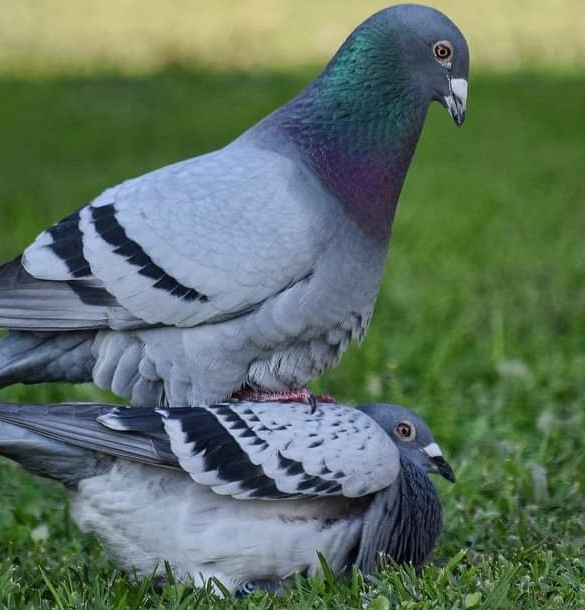
Pigeon Nest
Once your birds get paired, place nesting material in the loft. Fanciers provide at least two nest per single pair of pigeons. This gives them a chance to find a nest to lay eggs, while squabs are maturing in another nest. At this point make sure your birds are taking good care of squabs in the other nest. Sometimes birds focus more on laying eggs in new nest rather feeding to the squabs resulting them to be weak and death in some cases.
Pigeon Nest Box
The wooden nest boxes are best choice for pigeons. Some wooden boxes approximately 16 inches square can be attached on wall. Some fanciers place the nesting material inside, some place them on floor and let the pigeons build their own nests.
Remove old nests and material, and burn them every year. Fall season is ideal for removing the nests as most pigeons normally molt (drop feathers). Most breeders remove the nests and force the birds not to breed during winter months. Young squabs produced during the winter often die from cold temperature.
Pigeon Nest Material
Pigeon Life Cycle – Always provide good supply of nesting material includes short straw, twigs, pine needles and tobacco stems. Straw is cheap and easy to get but there are certain disadvantages as it is good home for mites and lice which live in the hollow stems of the straw. Tobacco stems and pine needles are the best choice for pigeon nests.
Do Pigeon Lay Eggs ?
The answer is yes. After 10 days of mating the hen will go to nest and lay an egg, then she misses a day and lays a second egg. Usually birds start incubation when second egg is laid. The hen usually sits from evening till the next day. The Cock then sits while the hen eats and rests.
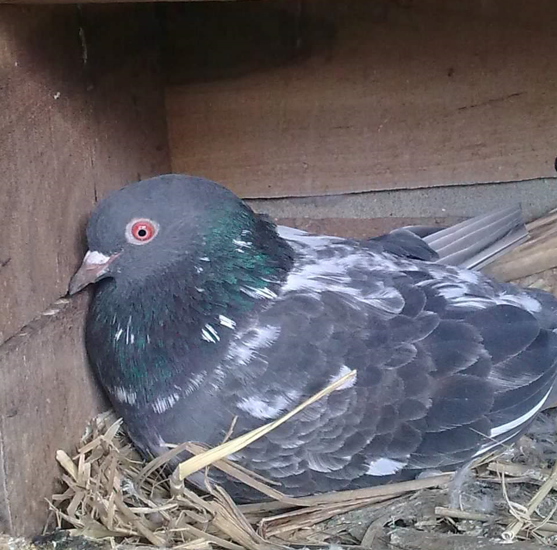
How Long Pigeon Egg Hatch
Here comes the most important question that in how long do pigeon eggs take to hatch. The Incubation time is about 17 days to 19 days, the egg first laid hatches, next 12 hours the other hatches.
Pigeon Squabs – Pigeon Chick Growth
Pigeon Life Cycle – Young’s which are known as squabs are kept well filled with a fluid called Pigeon Milk. Both the male and female pigeon have the ability to produce milk from their crop. Pigeon milk is partially digested grain which forms in the parent’s crop. On this diet young literally grow fast while you watch them. In 5 to 7 days’ squabs will be covered with quill feathers and are ready to band.
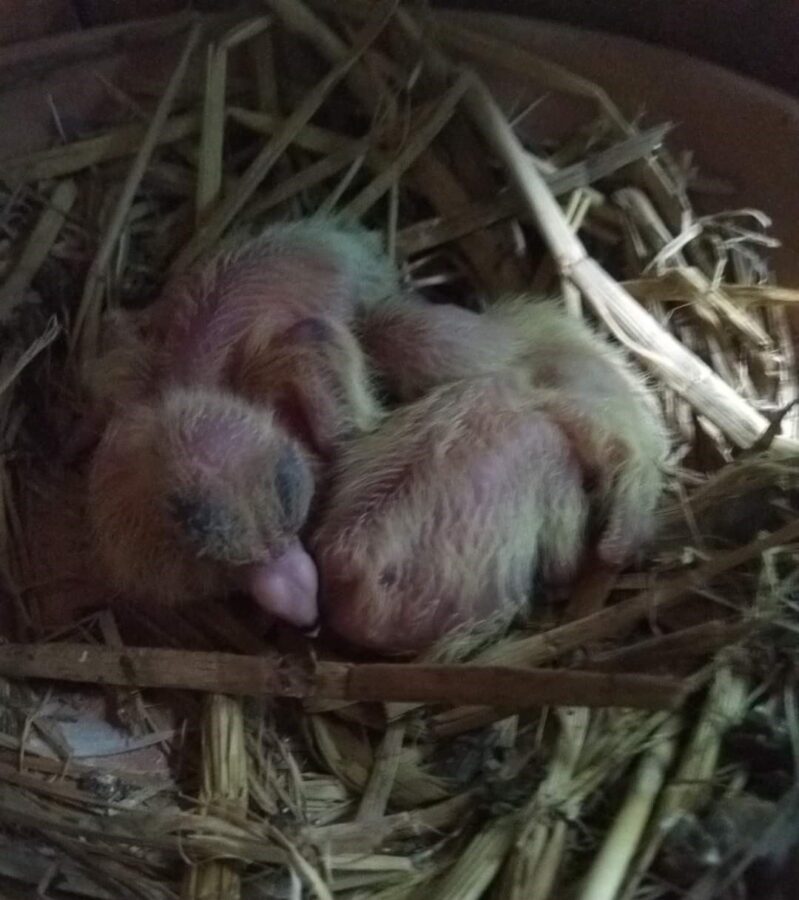
In three weeks the hen will be ready again to lay new eggs. If there is a spare nest box, the pair will make another nest and lay two eggs. When squabs are about 4 weeks old, they reached full size and are very fat and heavy. At this stage squab are pushed to go on ground from their nest. They become lean and smart during their learning time how to eat and drink.
At week 5, chicks are ready to fly and are ready to move in different young bird section. This is Natural Pigeon Life cycle, soon they will be ready to breed and select partners for their own.
Pigeon Average Life Span
Average life span of pigeon is 5 to 7 years. Since I have seen some highflyer pet pigeons living in the age of 20 years. Even in my loft I have some racer pigeon with age between 12 to 15 years. In case of pet pigeons, they can live from 9 years to 12 years in average. It totally depends on your care. If the birds are having their proper treatment of diseases, eating mix balanced diet and consuming the required vitamins. They can live a long and healthy life.
- Best Quality Pigeons Sign to Notice

- Best Racing Pigeon Eyes Hidden Secret Revealed

- Canker Sore Treatment in Pigeons

- Coccidiosis In Pigeons – How To Treat Cocci Disease

- Diarrhea in Pigeons Big Problem for Fanciers

- Digestion Issues in Pigeons Not To Worry Now

- Eye of Pigeon – The Secret Fanciers Don’t Know

- How to Check Pigeon Health in 5 Minutes ?

- How To Deal With Baby Pigeon Leg Paralysis



